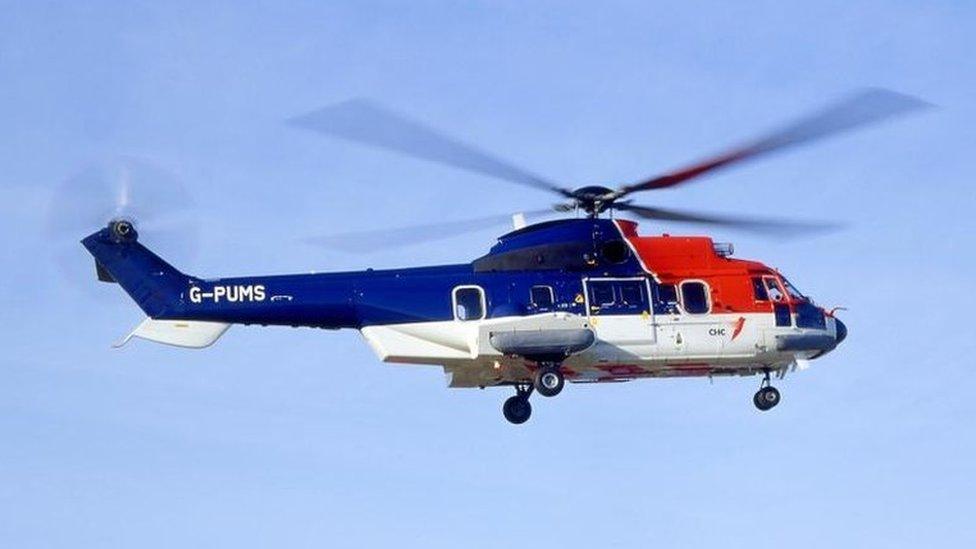BP will not reintroduce fatal crash helicopter
- Published

BP will not use the Super Puma 225 and L2 helicopters until the root cause of last year's fatal crash is known.
The helicopters were grounded after an accident off the coast of Norway killed 13 people, including Iain Stewart from Aberdeenshire, in April 2016.
The UK Civil Aviation Authority (CAA) and the Norwegian authorities have allowed flights to resume if new safety conditions are met.
BP said it will wait for the completion of the AIBN and Airbus investigation.
Total E&P UK also confirmed that they have no immediate plans to bring the Super Puma models back into service and said the Sikorsky S92 helicopter fulfilled its operational requirements.
Unite said it was "very disappointed and very angry" that the CAA made its decision to lift the ban before knowing the cause of the crash.
The union's regional organiser in Aberdeen, Tommy Campbell, said: "we need to know the root cause analysis of the accident in Norway last year and we still haven't got the answers to that so we think it's very inappropriate that the ban should be lifted."
Yesterday a North sea offshore worker, who wished to remain anonymous, told BBC Scotland that he would dread travelling in the helicopters again and he would not be able to tell his family if he had to fly in one.

Thirteen people died after the Super Puma crash in April 2016
But the CAA said that helicopters would not begin flying immediately and that a plan of checks, modifications and inspections will be undertaken before any flights take place.
These include:
Change in the design by removal of the components that were susceptible to premature deterioration
Earlier replacement of component
Design change to introduce an improved maintenance inspection method to detect any deterioration at an early stage
More frequent inspections
Reduction in the thresholds for rejecting components based upon early signs of any deterioration
CAA head of airworthiness John McColl said: "This is not a decision we have taken lightly. It has only been made after receiving extensive information from the Norwegian accident investigators and being satisfied with the subsequent changes introduced by Airbus Helicopters through detailed assessment and analysis."